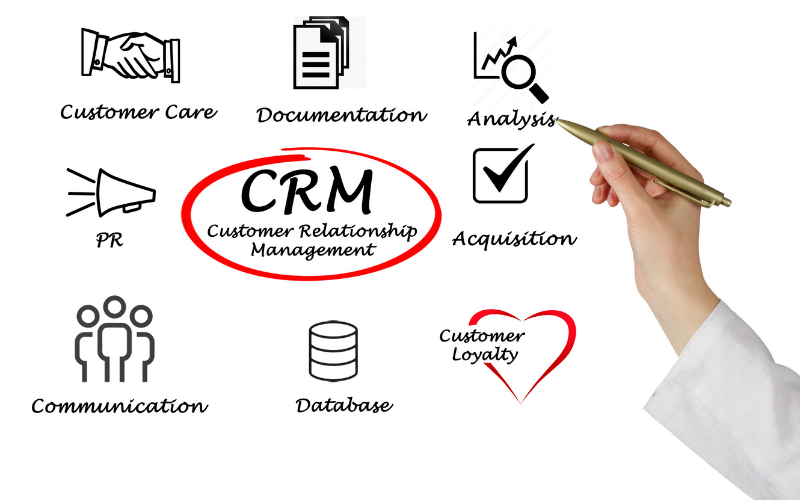Where are those new clients?
paul lloyd • September 29, 2021
Where are those New Clients?
Advice on running a Sales campaign to win £1m new business
OK so let’s assume that you have started to develop a culture in your organisation geared towards creating new business as a primary goal.
So where do you go next? Ideally you need a plan of action, a campaign with steps to follow and you need to decide what you are looking to achieve, so you need to do some maths.
The Maths…
Let’s say you want to achieve £250,000 of NEWLY contracted business from NEW
Accounts over the next 12 months, this being entirely incremental to your existing business. Your target is that this is made up from additional subscription-based recurring revenue (the most valuable).
So, you have a look at your existing customers and work out their current average spend
and their average size regarding the number of users. Having done this work, you realise that it would also be good to look to increase this average. You see that you have a lot of small clients who are no longer profitable so you would like to strengthen this average by using a more targeted approach. So, if you can win five new customers of 100 users with an average £50,000 annual contract value, you can achieve a Target.
(As a guide the Average spend on ICT across Europe of a 30-seat company is €50k, 100 seats €228k euro, 500 seats €1.22m)
Who are you going to sell to?
You now need to decide who you are going to sell to, again let’s look at your existing customers
to see in which industry sectors you have the most domain knowledge. Let’s assume that you have some clients from the retail sector and you have a good understanding of what they look for so will run a campaign towards retailers. So, you now need to obtain a list of retailers within your geography who have around 100 users. Building the list is a combination of buying some data and research using some or all of the resources that are available to you. Ideally you need a list of no more than 300 (your marketing universe), and then enter these into your CRM system such that you can use the information.
Focus on somebody rather than just anybody
Now speak to your existing customers
and build a couple of case studies
and get some testimonials. Consider building an industry-specific section on your website. Focus on somebody
when you communicate to our target audience rather than just anybody. You are now in a position to start your campaign activity, there are many different routes to take to enter into a dialogue with prospective new customers and no one size fits all. This is where creating a persona for each customer
can be highly beneficial and make all the difference.
What are personas?
A persona is customer profile
– bringing your customers to life in effect with a full profile that you create to allow you to assign personality and key characteristics which help you to understand who you are talking to / doing business with. B2B persona creation nearly always focuses on the key buyer or main decision maker of a product or service. The ultimate aim is more knowledge of their needs and understanding how best to market to them. It also helps your staff to understand your customers better and perhaps even tailoring your product development.
Creating B2B personas – who, what etc
• What is their age, occupation and decision-making responsibilities?
• What is important to them when they are looking for suppliers?
• What are their goals?
• What are their needs?
• Do they have any issues with current / past suppliers?
• How do they interact with suppliers? Email, face-to-face meeting, video call?
Social Media – do your research
Look for the companies on LinkedIn
and follow them so that you get true visibility of their activity, follow them on Twitter / FB / IG / YouTube etc to see what interests them. Ultimately when it becomes time to speak to your prospects, a phone call is always probably the best place to start. If you have 200 prospects; it is fair to assume that 100 of these will be looking for something within your period of activity, so if you are looking for a conversation with 5% of these, it should be possible. You then need to keep it rolling on, and you will get more customers next year with less effort with the groundwork, personas and pipeline of opportunities you have built.
‘Sales is a process not an Event.'
You will see from this that to put this together correctly takes time and a considerable effort, but when you look after the new clients for three years because of the recurring nature of the business this is potentially a £1,000,000 campaign.
Thanks for reading,
Paul Lloyd, Sellerly.
MSP/ VAR Sales Problem Solver,
Sales Management Mentor
P.S Did you know I’m a passionate bee enthusiast and keeper? Here’s your bee fact of the day;
Did you know bees make a whoop when they bump into each other? The New Scientist reports that "a vibrational pulse produced by honeybees, long thought to be a signal to other bees to stop what they are doing, might actually be an expression of surprise."

Have you ever lost a client without even knowing they were looking around? For even the most “on the ball” Salesperson this is probably a very real reality. You lose clients without knowing they were looking . Less than 4% of your customers will tell you if they are unhappy so you may never know if you have a customer on the fence. There is something very British about not complaining about poor service, so here we take a look at the r easons why your customers may leave and change to another competitor.

Stages 3 - 4 - Beginning to Scale Up to Scaling Out So, in the last article, we looked at the two “starter” stages for a Sales business when it becomes successful and starts growing. Now we look at the pivotal maturing stages entitled loosely Beginnings of Scaling and Scale-Out. These stages occur when a f ew key things are met/achieved , usually, the business has an increasing number of teams and key sales roles in the organisation, 3-10+ Account Executives, multiple Sales Reps, and a growing Management team . Have a look below at the infographic and see where your organisation is measuring up. Where do you fit? How Sales Mature and Excellent are you / your organisation?

Stages 1 -2 - From a Founder Seller to a Small Sales Team So, congratulations, your Sales business is successful and growing, but is it maturing? Sales planning, whether at a company, department, or team level, is necessary for hitting targets and providing a framework for the whole business to strive towards, but do you know where you are in your Sales Maturity? A sales skills maturity model helps you evaluate your current sales skills and identify the areas that need improvement. Everyone needs a plan in their life, and anyone in Sales DEFINITELY needs a plan so we’ve put together this Infographic that details out the stages and milestones an organisation n eeds to typically follow to progress to Sales Excellence and Maturity . It’s a lot of information so we’ve focussed this week on Stages 1 and 2 only – Founder Seller to Small Sales Team , and our next blog will focus on Stages 3 and 4 – Beginnings of Scaling Up and Scale Out. Where do you fit? How Sales Mature and Excellent are you / your organisation?

Where are those New Clients? Over recent years I have spent a lot of time meeting and working with Managed Service Providers / VARs, and when discussing the biggest challenges in their business, it always comes back to the same thing over and over. WINNING NEW CUSTOMERS. This is a challenge that seems to affect any company of any size , whether their turnover is £500k or £40m. They need to win new contracts and new customers. Most of these businesses have reached the level that they have through recommendations and referrals or in the case of the bigger ones some acquisitions as well, rarely it seems going out and actively generating an opportunity and a sale.

Every company needs to do a sales forecast, whether weekly, monthly, or quarterly. Sales forecasts are an essential requirement for all stakeholders. Forecasting is a fundamental tool for businesses to plan, strategize, and make informed decisions. It helps them estimate future revenue, set goals, make informed business decisions, manage inventory, and supply chain, and improve cash flow management A good forecast means no surprises in store, funds in the bank and stock in the warehouse . Healthy forecasts protect companies from tough competitive and market conditions and position them better to adapt, plan, and thrive in the present and future. Based on current industry data and research, it seems most Sales leaders lack confidence in their forecasts, as well as the expertise to improve them. Disorganised and non-formal forecasting processes are a likely culprit. 93% of sales leaders are unable to forecast revenue within 5% , even with two weeks left in the quarter. 67% of organizations lack a formalized approach to forecasting altogether. 80% of sales organisations DO NOT have a forecast accuracy of greater than 75% . 55% of sales leaders do not have high confidence in their forecasting accuracy. (Stats from CSO Insights and Gartner)

A Trusted Advisor in the MSP market space is aiming for a long-term relationship, not short-term gain, and not to be seen as just a vendor, or worse still, the IT guy! So surely all TSP/MSPs want to be seen as trusted advisors to their clients, with the obvious benefits of repeat business, referrals, and introductions to your client’s other professional advisors. You do not need to “sell” your products or expertise when you are the Trusted Advisor. But have you put the time and effort in to be able to understand their business and what they are looking to achieve? Are you a true Trusted Advisor?

What is Lead Gen? “Lead Generation”, or “Lead Gen” for short, is the process of identifying and cultivating potential customers for a business's products or services. It is essential for businesses as it can turn interested parties into paying customers which in turn helps to create a stable customer base and drive sales, this then creates an ongoing cycle where customers give good reviews, which in turn results in customer loyalty and new business from that. Lead Gen also allows for a better understanding of a company's key customers and target markets, their needs and preferences thus allowing for more personalisation of products, services and marketing communications.



